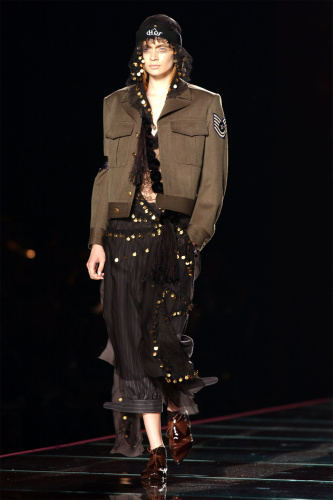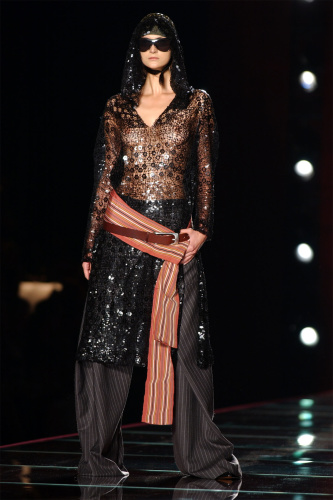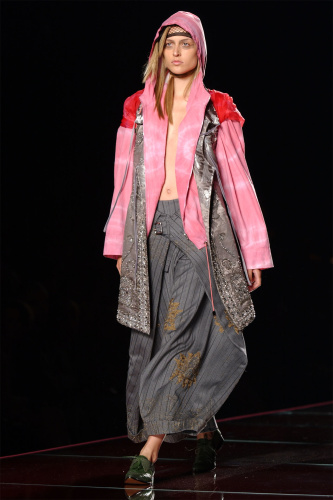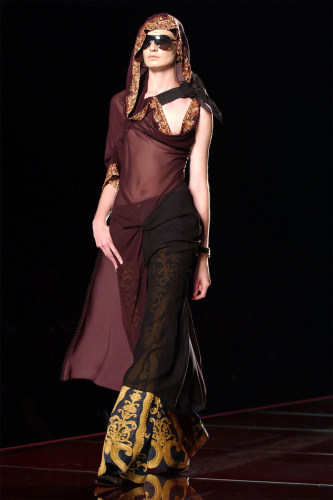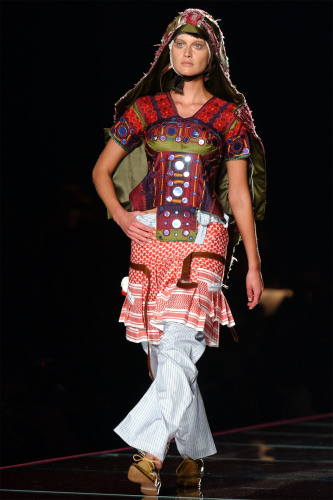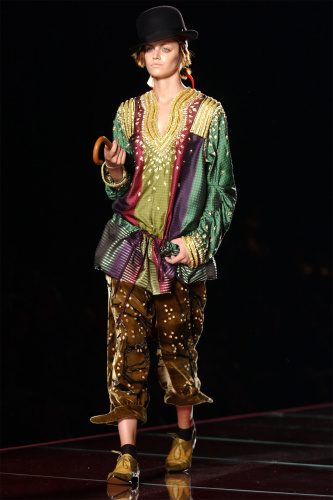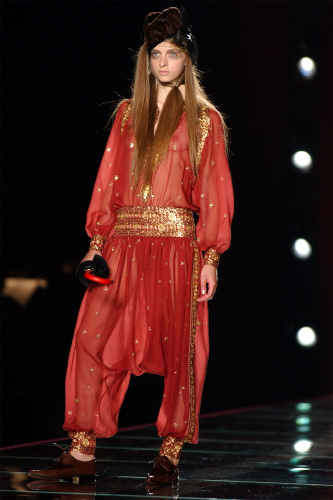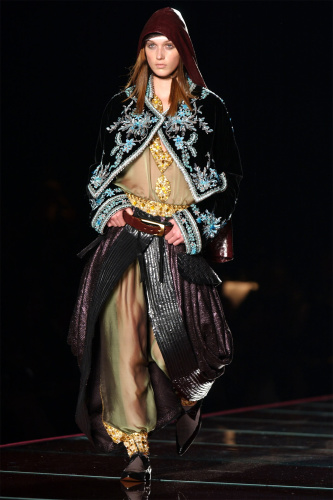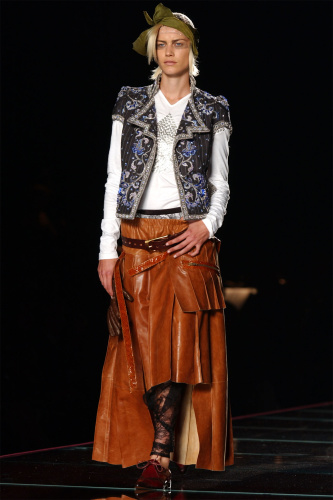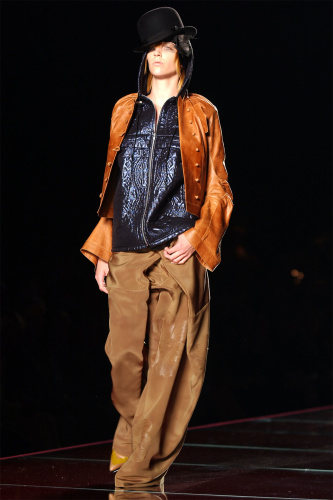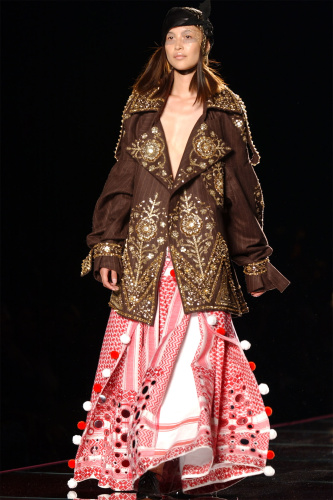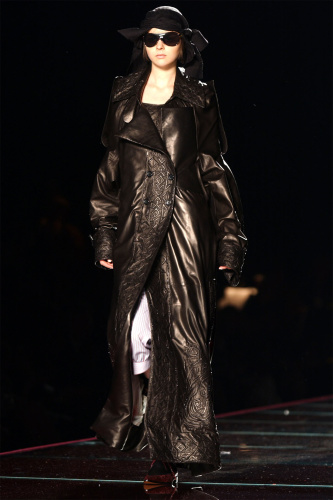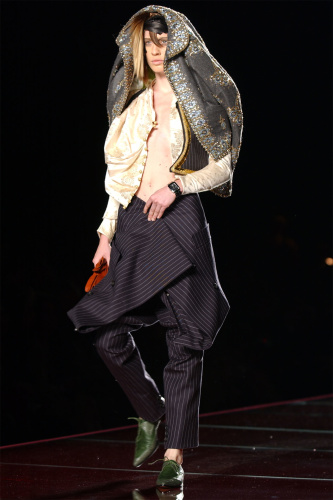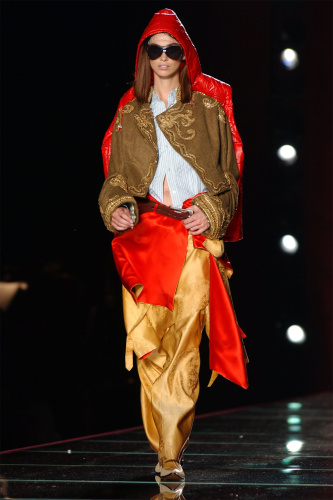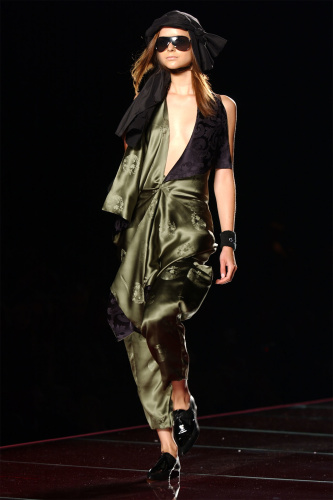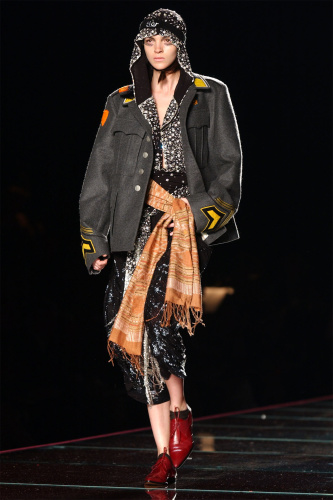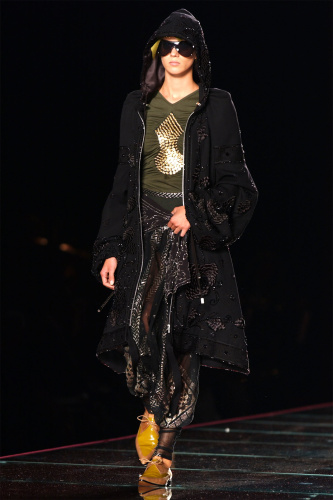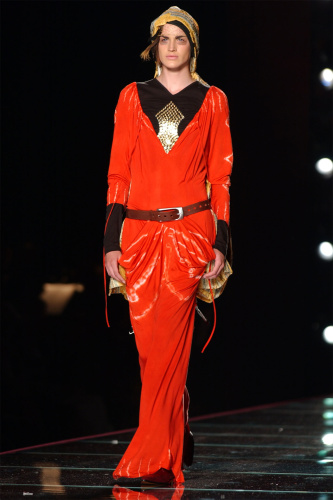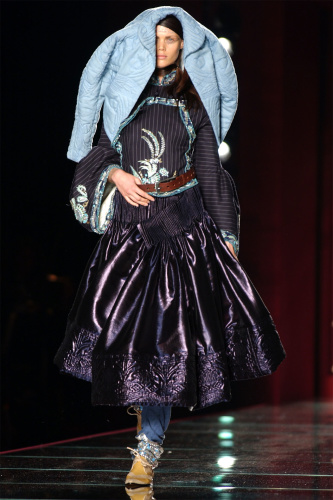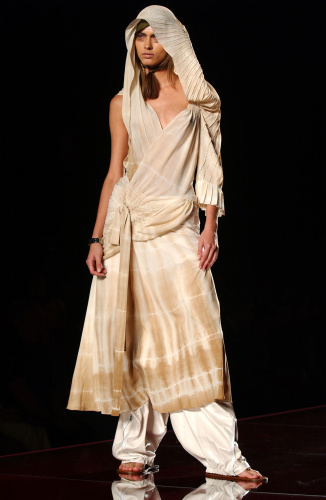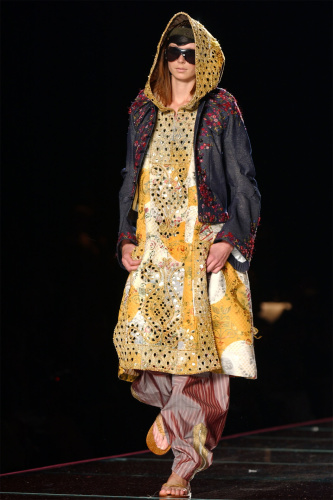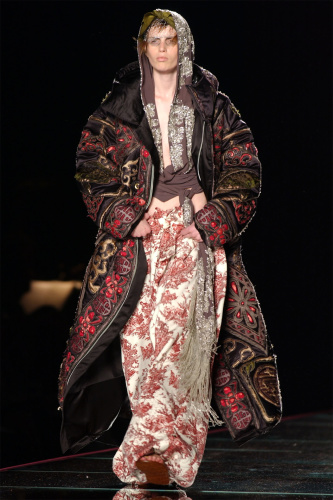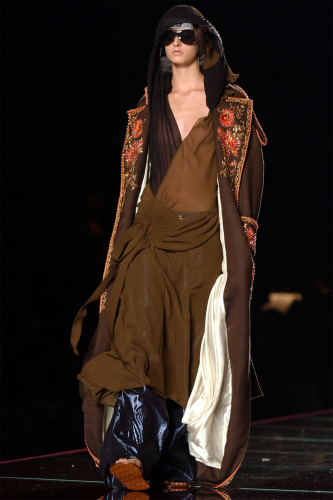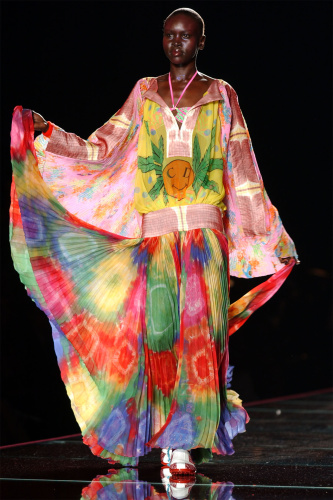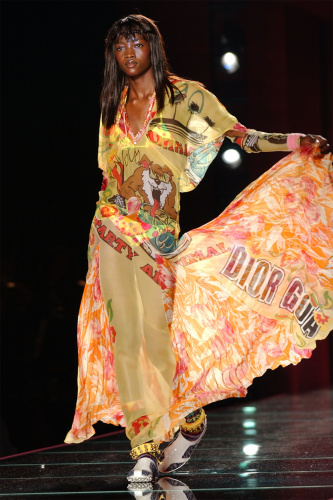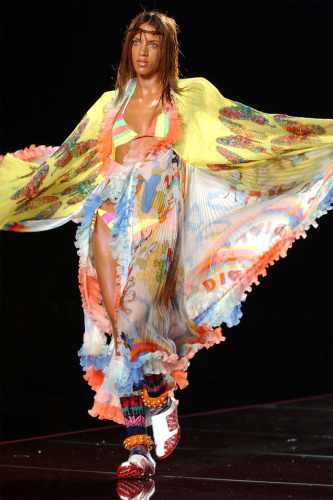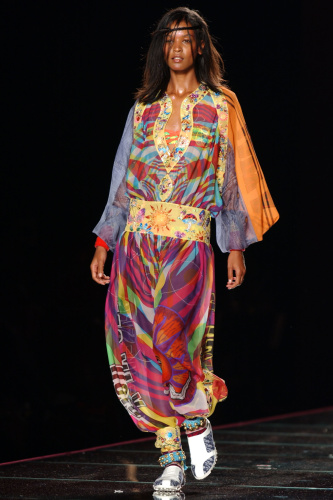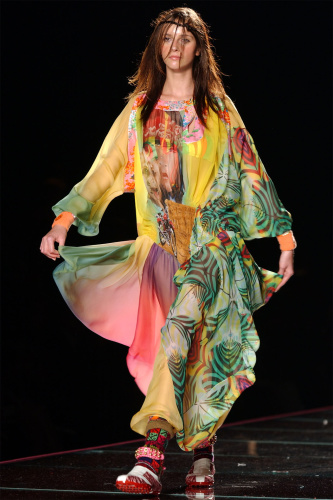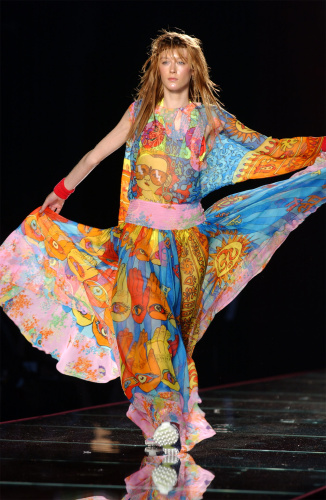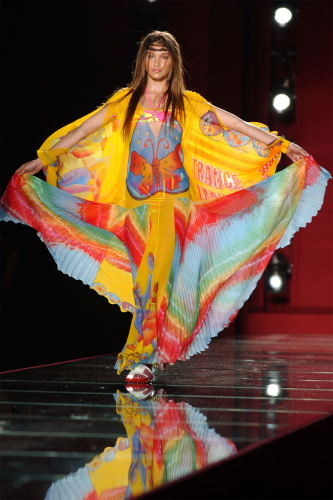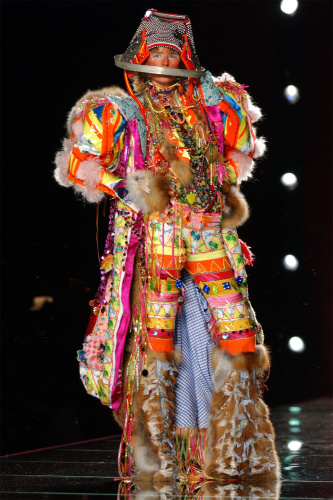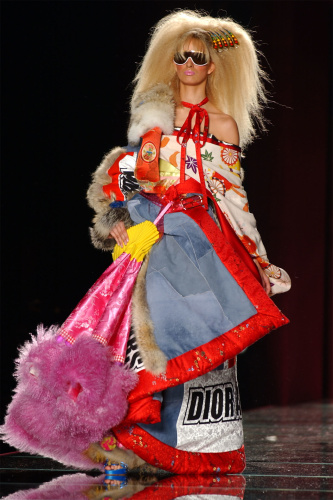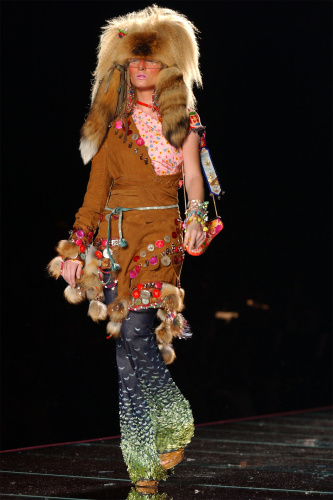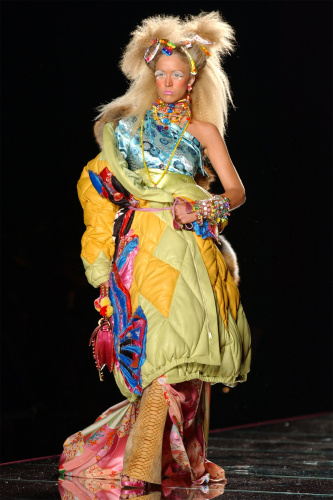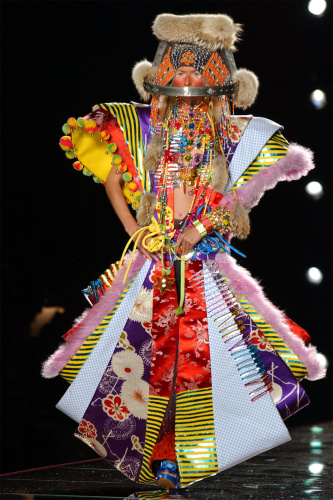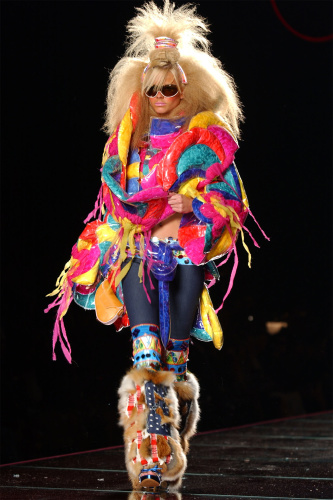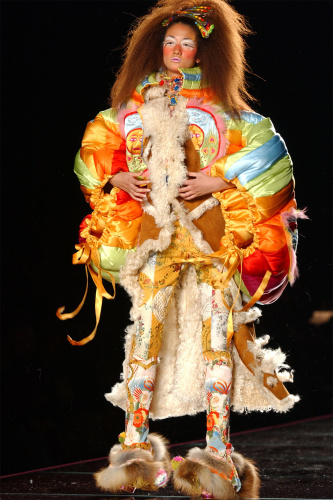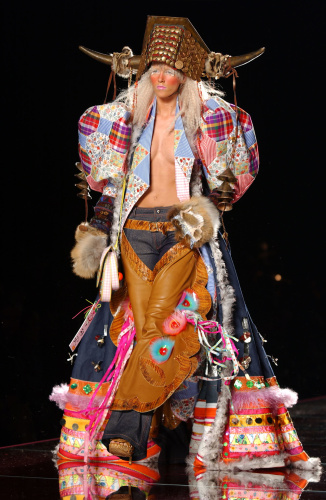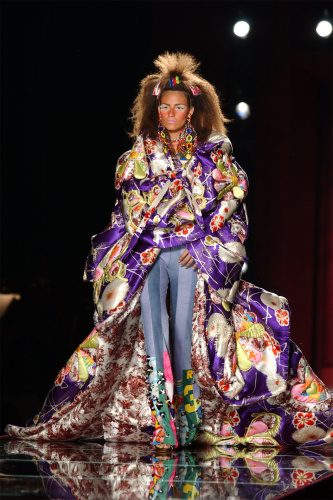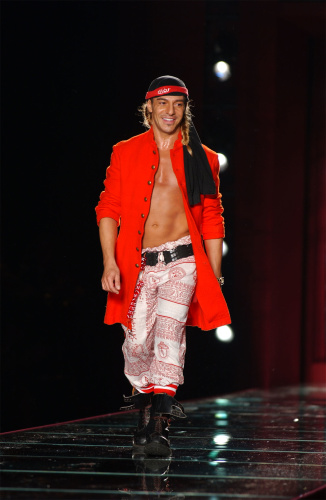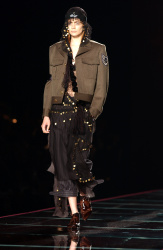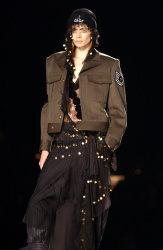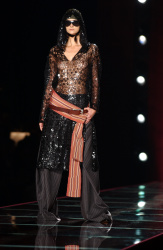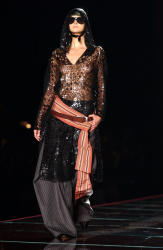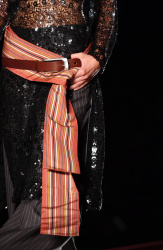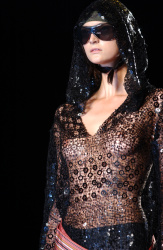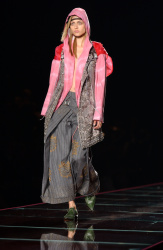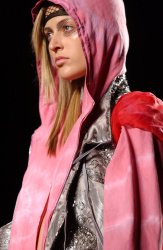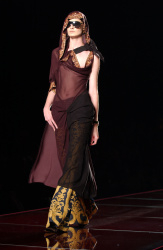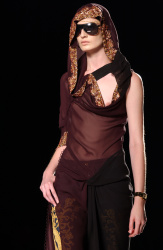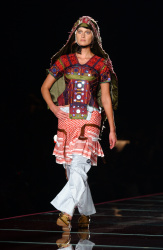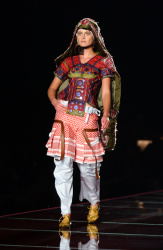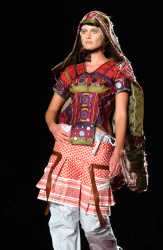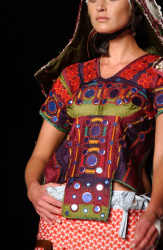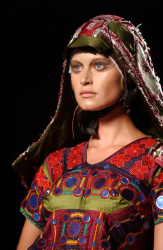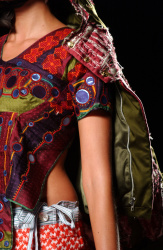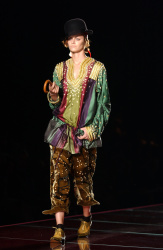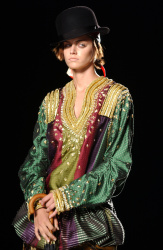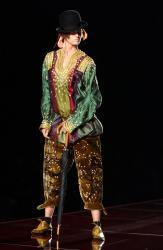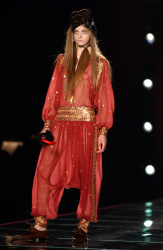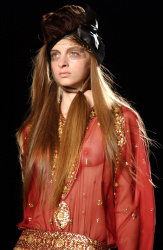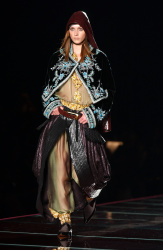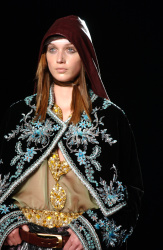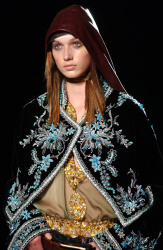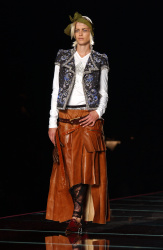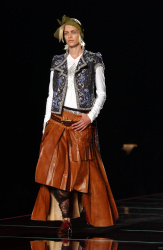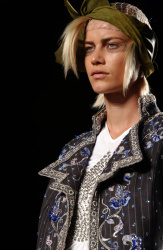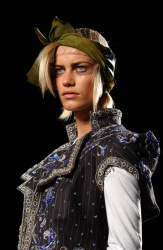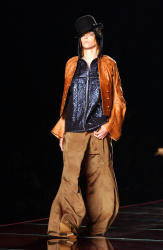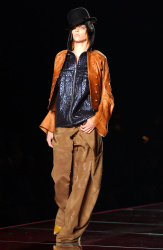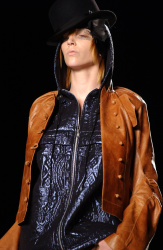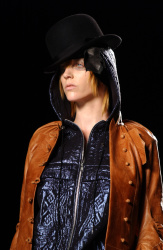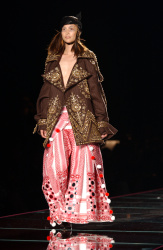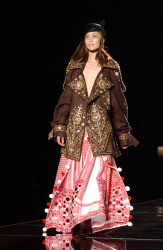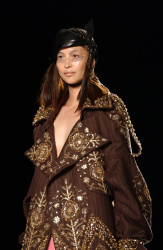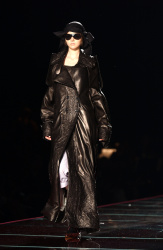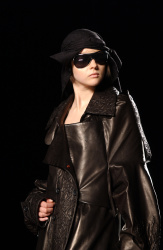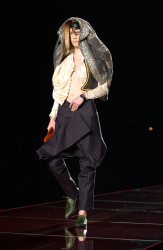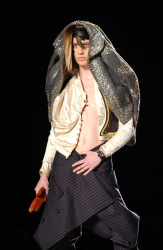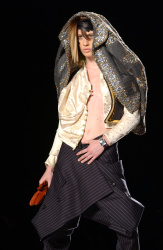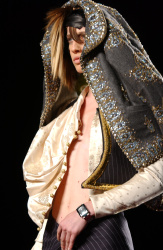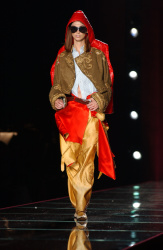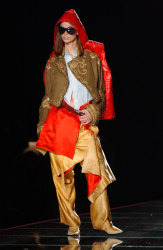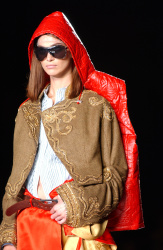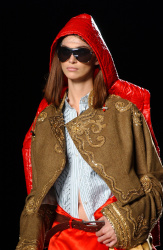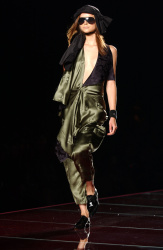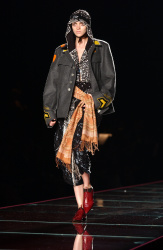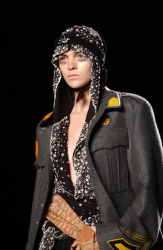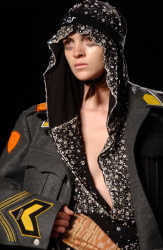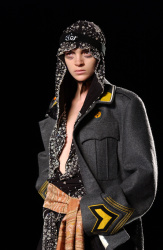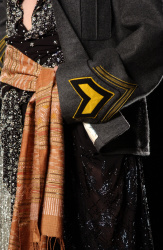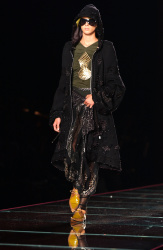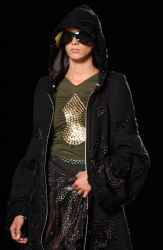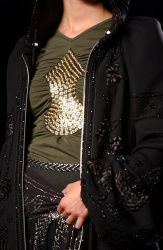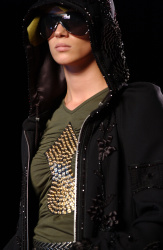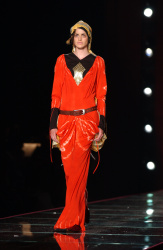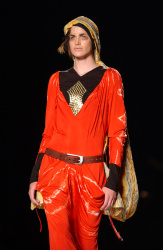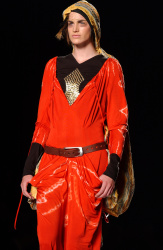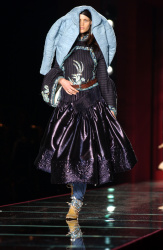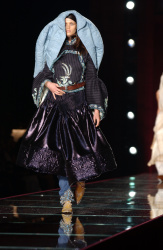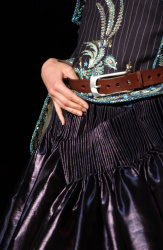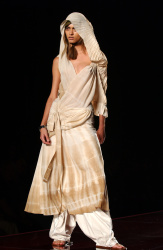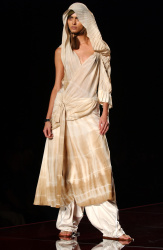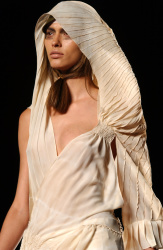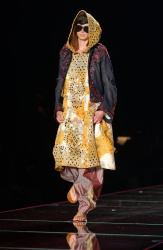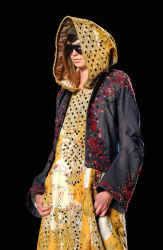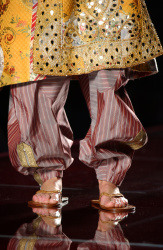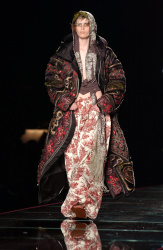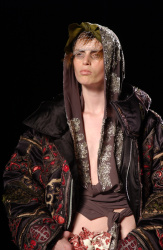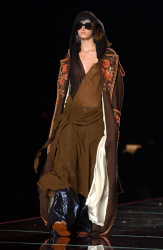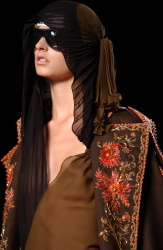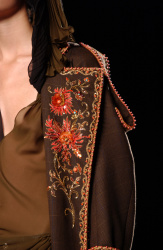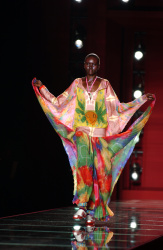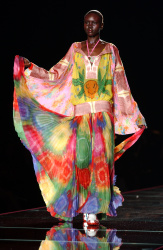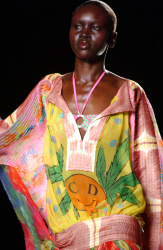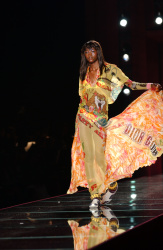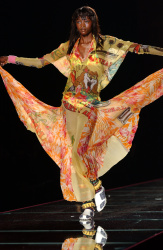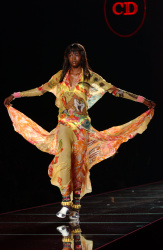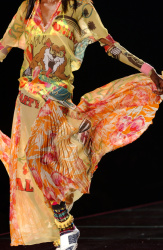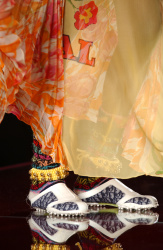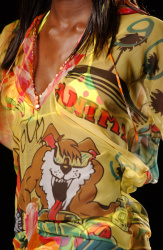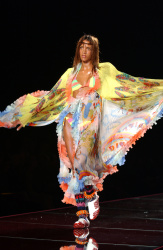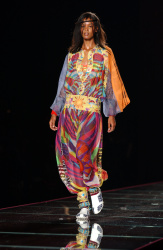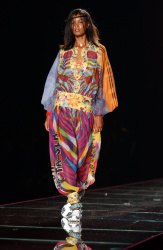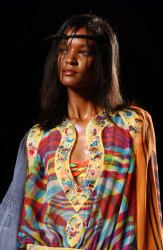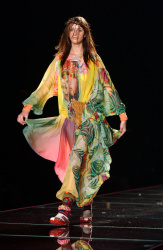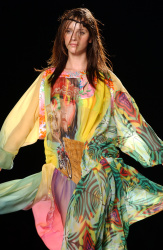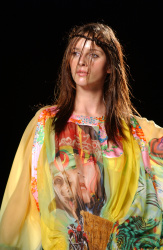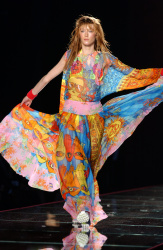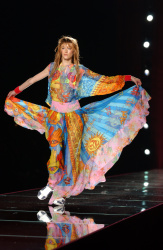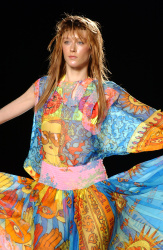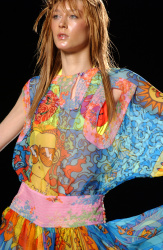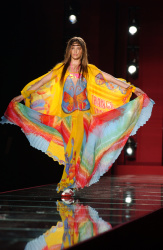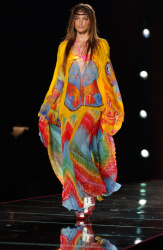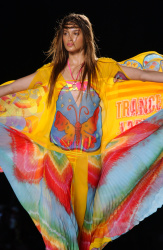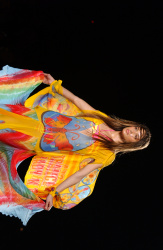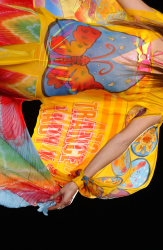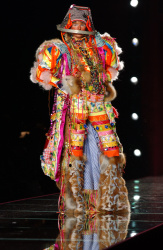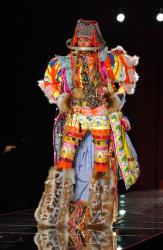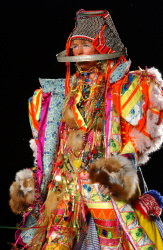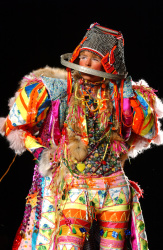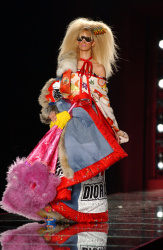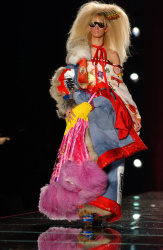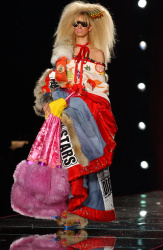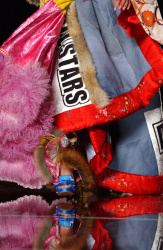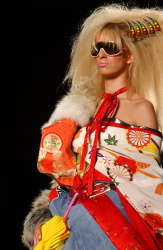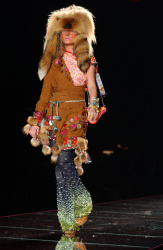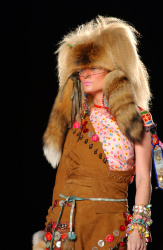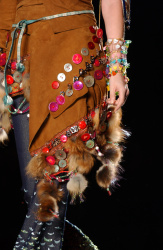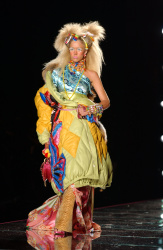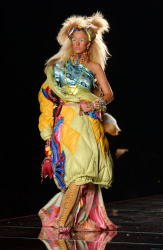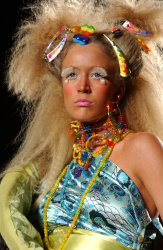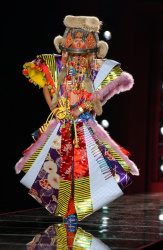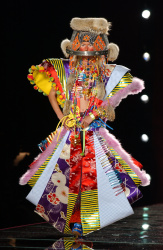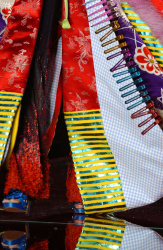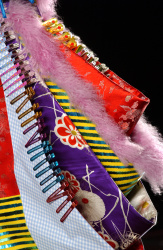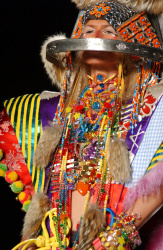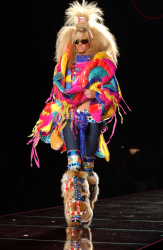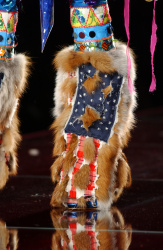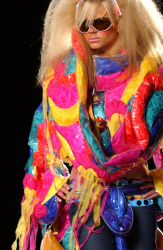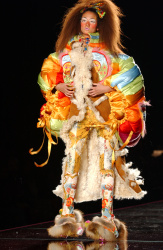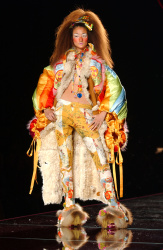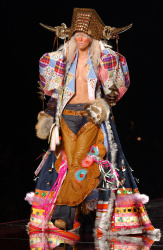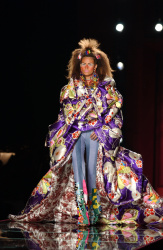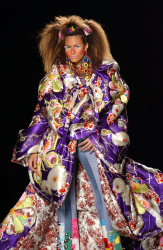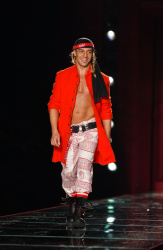You are using an out of date browser. It may not display this or other websites correctly.
You should upgrade or use an alternative browser.
You should upgrade or use an alternative browser.
Christian Dior Haute Couture F/W 2001.02 Paris
- Thread starter Scotty
- Start date
dior_couture1245
Fat Karl
- Joined
- Jan 30, 2006
- Messages
- 9,225
- Reaction score
- 4,763
It's so good.
It's not my FAVORITE of his Haute Couture shows, but it is one of those collections of John's where the more you look, the more you find...lots of hidden treasures here and lots of really amazing clothes and pieces.
It's not my FAVORITE of his Haute Couture shows, but it is one of those collections of John's where the more you look, the more you find...lots of hidden treasures here and lots of really amazing clothes and pieces.
MagFan
Well-Known Member
- Joined
- May 16, 2006
- Messages
- 4,439
- Reaction score
- 2,076
They donated two runway samples with accessories and sketches to some foundation and they sold them on fundraising auction, I guess

Lot 3
Galliano for Dior Couture Embroidered Harem Ensemble
French, Fall/Winter 2001
Ruby silk georgette tunic blouse and harem pants, scattered and trimmed with metallic gold floriform pailletes in ethnic motif, unlined, size M, tape label of tunic: Tunique 7/Roos/Flou and pants: 7/Roos;
Together with Accessories. Comprising wing tip brogues in brown patent and snakeskin, size 10, labeled: Christian Dior/Souliers, brown persian lamb hat labeled: 7/Roos.
Each in excellent condition;
And a Watercolor and Pencil Design Drawing. Hand written inscription for the Mosaic Foundation, signed and dated, 12 x 18 inches.
Estimate: $3,000 - $5,000
Sold for $3,883 (includes buyer's premium)

Lot 4
Galliano for Dior Couture Embroidered Ensemble
French, Spring 2005
The sleeveless, hooded tunic referencing a qamis, muted silver gray silk brocade lampas overprinted in blocks of gold and diagonal ruby stripes to patchwork effect, various random gold and metallic gold silk thread stitches, encrusted borders of circular and ogee metallic gold pailletes, metallic gold thread, faceted gold beads, lined in ticking stripe silk, size L, tape label: Hedwig/palelot 21/Rafaelle, the trousers in plum striped silk twill, multiple applied pockets, fitted flat front and voluminous low crutch leg narrowing at ankles with side zips banded by gold brocade braid, waist 34 inches, tape label: Hedwig/pantelon 21/Rafaelle;
Together with Accessories. Comprising snakeskin flipflops with Dior logo imprint, size 10, olive toweling sweatband embroidered Dior, aviator sunglasses labeled: Christian Dior and black leather remnant.
Each in excellent condition;
And a Watercolor and Pencil Design Drawing. Inscribed for the Mosaic Foundation, dated and signed, 12 x 18 inches.
Estimate: $3,000 - $5,000
Sold for $6,572 (includes buyer's premium)
doyle.com

Lot 3
Galliano for Dior Couture Embroidered Harem Ensemble
French, Fall/Winter 2001
Ruby silk georgette tunic blouse and harem pants, scattered and trimmed with metallic gold floriform pailletes in ethnic motif, unlined, size M, tape label of tunic: Tunique 7/Roos/Flou and pants: 7/Roos;
Together with Accessories. Comprising wing tip brogues in brown patent and snakeskin, size 10, labeled: Christian Dior/Souliers, brown persian lamb hat labeled: 7/Roos.
Each in excellent condition;
And a Watercolor and Pencil Design Drawing. Hand written inscription for the Mosaic Foundation, signed and dated, 12 x 18 inches.
Estimate: $3,000 - $5,000
Sold for $3,883 (includes buyer's premium)

Lot 4
Galliano for Dior Couture Embroidered Ensemble
French, Spring 2005
The sleeveless, hooded tunic referencing a qamis, muted silver gray silk brocade lampas overprinted in blocks of gold and diagonal ruby stripes to patchwork effect, various random gold and metallic gold silk thread stitches, encrusted borders of circular and ogee metallic gold pailletes, metallic gold thread, faceted gold beads, lined in ticking stripe silk, size L, tape label: Hedwig/palelot 21/Rafaelle, the trousers in plum striped silk twill, multiple applied pockets, fitted flat front and voluminous low crutch leg narrowing at ankles with side zips banded by gold brocade braid, waist 34 inches, tape label: Hedwig/pantelon 21/Rafaelle;
Together with Accessories. Comprising snakeskin flipflops with Dior logo imprint, size 10, olive toweling sweatband embroidered Dior, aviator sunglasses labeled: Christian Dior and black leather remnant.
Each in excellent condition;
And a Watercolor and Pencil Design Drawing. Inscribed for the Mosaic Foundation, dated and signed, 12 x 18 inches.
Estimate: $3,000 - $5,000
Sold for $6,572 (includes buyer's premium)
doyle.com
Scotty
Well-Known Member
- Joined
- Apr 3, 2015
- Messages
- 6,116
- Reaction score
- 4,135
Scotty
Well-Known Member
- Joined
- Apr 3, 2015
- Messages
- 6,116
- Reaction score
- 4,135
There's a short scene in High & Low: John Galliano where they touch on John's travels around the world and how they inspired his collections. In it, they feature footage of him meeting the local people of Tibet (if I remember correctly), with one of the locals presenting him a traditional costume that would go on to directly inform Stella Tennant's look in this collection—metal head-gear and all. A quick montage shows the journey from meeting the people, to mood-board, sketch, creation and ultimately to its runway moment. It was such a great thing to see that process. It's a shame things like this are now immediately seen as negative appropriation...I think it was Robin Givhan who was narrating this bit and she also called it out as appropriation, describing it as a bad symptom of the industry altogether. I don't agree with such a narrow view on finding inspiration in other cultures, but I thought it was an interesting little sequence nonetheless. Worth a watch.
Lola701
Well-Known Member
- Joined
- Oct 27, 2014
- Messages
- 13,805
- Reaction score
- 36,746
But it’s appropriation. You are maybe uncomfortable with the idea because it’s John and it’s hard to have a negative POV on something we like.There's a short scene in High & Low: John Galliano where they touch on John's travels around the world and how they inspired his collections. In it, they feature footage of him meeting the local people of Tibet (if I remember correctly), with one of the locals presenting him a traditional costume that would go on to directly inform Stella Tennant's look in this collection—metal head-gear and all. A quick montage shows the journey from meeting the people, to mood-board, sketch, creation and ultimately to its runway moment. It was such a great thing to see that process. It's a shame things like this are now immediately seen as negative appropriation...I think it was Robin Givhan who was narrating this bit and she also called it out as appropriation, describing it as a bad symptom of the industry altogether. I don't agree with such a narrow view on finding inspiration in other cultures, but I thought it was an interesting little sequence nonetheless. Worth a watch.
That being said I don’t think appropriation comes without appreciation for designers. It’s logical to think that people will be drawn to cultures they love and have curiosity for.
I think there was a kind of over-romantization about those trips. It was a topic of discussions at the time with people from the industry because we were so jealous of that opportunity to just travel to find inspiration. I think the magic was a bit lost when I discovered what it was about in the movie.
But I don’t think people should feel guilty liking something because it can be seen as cultural appropriation.
People will call it appreciation when it’s a designer they love and appropriation when it’s someone they are less into (even though sometimes like for CDG it’s quite stupid).
Maybe my only regret about John was that it felt like costume when in fact those pieces on their own with the inspiration/copy are just enough.
But it’s appropriation. You are maybe uncomfortable with the idea because it’s John and it’s hard to have a negative POV on something we like.
That being said I don’t think appropriation comes without appreciation for designers. It’s logical to think that people will be drawn to cultures they love and have curiosity for.
I think there was a kind of over-romantization about those trips. It was a topic of discussions at the time with people from the industry because we were so jealous of that opportunity to just travel to find inspiration. I think the magic was a bit lost when I discovered what it was about in the movie.
But I don’t think people should feel guilty liking something because it can be seen as cultural appropriation.
People will call it appreciation when it’s a designer they love and appropriation when it’s someone they are less into (even though sometimes like for CDG it’s quite stupid).
Maybe my only regret about John was that it felt like costume when in fact those pieces on their own with the inspiration/copy are just enough.
It indeed is appropriation, I would never negate that. Even if it's done out of appreciation, it still is appropriation. Whether you or I or anyone aesthetically responds to it, it's still appropriation. I just don't agree with the view that all appropriation is bad, full stop. It frames cultural inspiration down to a narrowing two-dimensional form of expression ("I see, I take"), while it can represent and propose new layers to ideas and narratives that dig deeper than the surface. Not saying John did not often lean on the two-dimensional...I mean, couture FA98 is exhibit A. Overall, I think it puts a limiting cap on curiosity and creativity if one is morally only allowed to reference what comes from their own world.
Lola701
Well-Known Member
- Joined
- Oct 27, 2014
- Messages
- 13,805
- Reaction score
- 36,746
I’ve been lucky to work at a fashion brand, to be around creatives and also to express some sort of creativity and I think that there’s a naïveté, an irrationality to creativity that can’t be explain. And the creative studio is a shelter of that.It indeed is appropriation, I would never negate that. Even if it's done out of appreciation, it still is appropriation. Whether you or I or anyone aesthetically responds to it, it's still appropriation. I just don't agree with the view that all appropriation is bad, full stop. It frames cultural inspiration down to a narrowing two-dimensional form of expression ("I see, I take"), while it can represent and propose new layers to ideas and narratives that dig deeper than the surface. Not saying John did not often lean on the two-dimensional...I mean, couture FA98 is exhibit A. Overall, I think it puts a limiting cap on curiosity and creativity if one is morally only allowed to reference what comes from their own world.
And suddenly, when a collection is out in the world, some things becomes rational in the eyes of the viewers and judges.
And I think this is what the whole cultural appropriation comes from.
A lot of times, when I look at John shows I cringe because it’s quite hilariously embarrassing. The Dior SS2000 RTW collection is probably the cringiest with the Lauryn Hill section.
That being said, I think the cultural appropriation question became an issue only when fashion as corporate entity, as an industry became a huge voice. When those owners of brands became known, billionaires and for some, the richest men of the world, suddenly, what was appreciated with the filter of frivolity became a deeper issue.
Suddenly, it’s not John Galliano the person stealing ideas from trips around the world to feed his creativity, it becomes Dior, the huge corporation that steals ideas with the help of it designers In order to generate billions on the back of the people they stole ideas from,
And when you add the western factor, it becomes even more deeper and it’s not about fashion anymore neither is about creativity.
The cultural appropriation conversation is interesting because it’s never about the clothes.
Yeah I think that’s very much true…as someone who works at a big fashion brand myself, close to its creative core but equally close to its corporate nature, I agree that balancing that naiveté with the realities of the big bad world is the ultimate challenge in this discussion.
With John’s work, I think it’s always extra interesting because he so often injects things from his own culture into the mix. Whether it’s London club culture, British upstairs/downstairs, new romantics, flamenco, latin… Let’s say one wouldn’t know he had Andalusian roots and you look at couture FW03, you could easily classify that collection as cultural appropriation, too. But we know it’s his culture, so we’ve decided it’s not a bad thing here. There’s also a stream of discourse that calls SP04 couture appropriation, eventhough ancient Egyptian culture has been dead for millennia so that’s just insane to me. My point is, yes you are right, this discussion is always about more than the clothes.
With John’s work, I think it’s always extra interesting because he so often injects things from his own culture into the mix. Whether it’s London club culture, British upstairs/downstairs, new romantics, flamenco, latin… Let’s say one wouldn’t know he had Andalusian roots and you look at couture FW03, you could easily classify that collection as cultural appropriation, too. But we know it’s his culture, so we’ve decided it’s not a bad thing here. There’s also a stream of discourse that calls SP04 couture appropriation, eventhough ancient Egyptian culture has been dead for millennia so that’s just insane to me. My point is, yes you are right, this discussion is always about more than the clothes.
I’ve been lucky to work at a fashion brand, to be around creatives and also to express some sort of creativity and I think that there’s a naïveté, an irrationality to creativity that can’t be explain. And the creative studio is a shelter of that.
And suddenly, when a collection is out in the world, some things becomes rational in the eyes of the viewers and judges.
And I think this is what the whole cultural appropriation comes from.
A lot of times, when I look at John shows I cringe because it’s quite hilariously embarrassing. The Dior SS2000 RTW collection is probably the cringiest with the Lauryn Hill section.
That being said, I think the cultural appropriation question became an issue only when fashion as corporate entity, as an industry became a huge voice. When those owners of brands became known, billionaires and for some, the richest men of the world, suddenly, what was appreciated with the filter of frivolity became a deeper issue.
Suddenly, it’s not John Galliano the person stealing ideas from trips around the world to feed his creativity, it becomes Dior, the huge corporation that steals ideas with the help of it designers In order to generate billions on the back of the people they stole ideas from,
And when you add the western factor, it becomes even more deeper and it’s not about fashion anymore neither is about creativity.
The cultural appropriation conversation is interesting because it’s never about the clothes.
Similar Threads
- Replies
- 209
- Views
- 62K
- Replies
- 125
- Views
- 28K
- Replies
- 79
- Views
- 22K
- Replies
- 7
- Views
- 8K
Users who are viewing this thread
Total: 1 (members: 0, guests: 1)
New Posts
-
-
Jonathan Anderson - Designer, Creative Director of JW Anderson & Christian Dior (8 Viewers)
- Latest: marines
-
-
-

